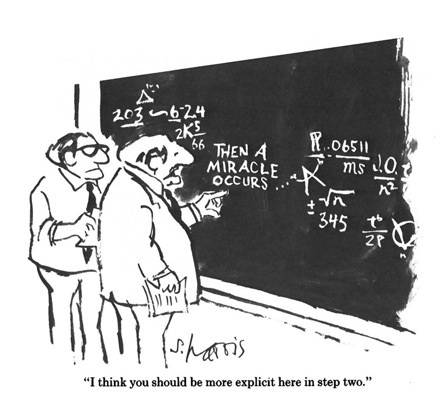
Posted on 09/24/2018 4:22:51 PM PDT by BenLurkin
“What he showed in the presentation is very unlikely to be anything like a proof of the Riemann hypothesis as we know it,” says Jørgen Veisdal, an economist at the Norwegian University of Science and Technology in Trondheim who has previously studied the Riemann hypothesis. “It is simply too vague and unspecific.” Veisdal added that he would need to examine the written proof more closely to make a definitive judgement. The Riemann hypothesis, one of the last great unsolved problems in math, was first proposed in 1859 by German mathematician Bernhard Riemann. It is a supposition about prime numbers, such as two, three, five, seven, and 11, which can only be divided by one or themselves.
They become less frequent, separated by ever-more-distant gaps on the number line. Riemann found that the key to understanding their distribution lay within another set of numbers, the zeroes of a function called the Riemann zeta function that has both real and imaginary inputs. And he invented a formula for calculating how many primes there are, up to a cutoff, and at what intervals these primes occur, based on the zeroes of the zeta function.
However, Riemann’s formula only holds if one assumes that the real parts of these zeta function zeroes are all equal to one-half. Reimann proved this property for the first few primes, and over the past century it has been computationally shown to work for many large numbers of primes, but it remains to be formally and indisputably proved out to infinity. A proof would not only win the $1 million reward that comes for solving one of the seven Millennium Prize Problems established by the Clay Mathematics Institute in 2000, but it could also have applications in predicting prime numbers, important in cryptography.
(Excerpt) Read more at sciencemag.org ...
Of possible interest
Link doesn’t work.
This should work:
42
Brave man
but it remains to be formally and indisputably proved out to infinity.
= = =
Using Demoncrat logic, it IS true; prove it is not.
Me and my Friday night bowling buddies have been discussing this theory for several years now. I think we're close to a solution and the million dollar prize......
Thanks BenLurkin.
Dr. Michael Atiyah is the mathematician making the claim. It would be surprising if this 89 year old man really did come up with a proof. Must mathematical breakthroughs are the efforts of much younger men. I guess if this old guy is right, then their is hope for everyone!
Andrew Beal (a Lansing area kid who grew up into a rocket builder, after a career in banking) has endowed a $1 million prize for a proof for his Beal Conjecture, btw. I mean, a couple of million might be nice to have.
Where did I put my TI calculator from 1982 college? I’ll have the answer in a jiff!!
Being that this is not claimed to be scientific it probably can not be proved in normal populations. Take a scientific approach to it and any theory will quickly become fact.
Infinity Squared.
Check Mate!
.
If you can double infinity
and double it again you’ll
Need a lot of paper to write
down all the Prime numbers.
.
How about infinity times infinity ¿
can anyone here help me
understand analytic continuation?

“The crux of Atiyah’s proof depends on a quantity in physics called the fine structure constant, which describes the strength and nature of electromagnetic interaction between charged particles.”
Have to admit the relevance here escapes me.
Democrat logic: it feels good so it must be true.
Oh yes. The standard formula for Global Warming advocates.
'Have to admit the relevance here escapes me.'
Derbyshire's book cited in post 10 goes into some of the amazing connections between the prime numbers and the subatomic world.
Disclaimer: Opinions posted on Free Republic are those of the individual posters and do not necessarily represent the opinion of Free Republic or its management. All materials posted herein are protected by copyright law and the exemption for fair use of copyrighted works.